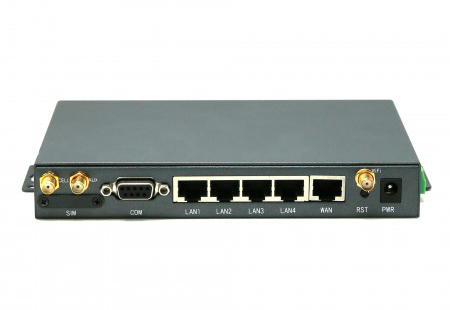Is a router with external antennas better?
Dec 18,2023 | Views: 274
Whether a router with external antennas is better depends on various factors and the specific use case. Here are some considerations:
Signal Strength and Coverage:
External antennas can often provide better signal strength and coverage compared to internal antennas. They can be adjusted and positioned to optimize the signal in a particular direction.
Flexibility:
External antennas offer more flexibility in terms of adjusting their position and orientation. This can be particularly useful in situations where you need to focus the signal in a specific direction or overcome obstacles.
Interference:
External antennas can help in minimizing interference by allowing you to position them away from potential sources of signal interference.
Aesthetics:
Internal antennas are generally more aesthetically pleasing and may be preferable in environments where the appearance of the router matters.
Portability:
Routers with internal antennas tend to be more compact and portable. If you need a router for travel or a small space, an internal antenna design might be more suitable.
Cost:
Routers with external antennas may be slightly more expensive due to the additional hardware. If cost is a significant factor, it's worth considering whether the enhanced performance justifies the higher price.
Ease of Use:
Internal antennas are generally more convenient and user-friendly. You don't have to worry about adjusting external antennas, which can be important for less tech-savvy users.
Technology Advances:
The technology in routers is continually evolving. Some modern routers with internal antennas may use advanced technologies to compensate for any potential signal strength or coverage limitations.
In summary, the choice between a router with external antennas and one with internal antennas depends on your specific needs and preferences. If you require greater control over signal direction and coverage, especially in a larger space or with potential obstacles, a router with external antennas might be a better choice. However, for simplicity, aesthetics, and smaller spaces, a router with internal antennas may be sufficient.
Prev: What are the antennas on a 4G router for?
Next: Why Are 5G Modem Manufacturers Igniting A Connectivity Revolutio
Signal Strength and Coverage:
External antennas can often provide better signal strength and coverage compared to internal antennas. They can be adjusted and positioned to optimize the signal in a particular direction.
Flexibility:
External antennas offer more flexibility in terms of adjusting their position and orientation. This can be particularly useful in situations where you need to focus the signal in a specific direction or overcome obstacles.
Interference:
External antennas can help in minimizing interference by allowing you to position them away from potential sources of signal interference.
Aesthetics:
Internal antennas are generally more aesthetically pleasing and may be preferable in environments where the appearance of the router matters.
Portability:
Routers with internal antennas tend to be more compact and portable. If you need a router for travel or a small space, an internal antenna design might be more suitable.
Cost:
Routers with external antennas may be slightly more expensive due to the additional hardware. If cost is a significant factor, it's worth considering whether the enhanced performance justifies the higher price.
Ease of Use:
Internal antennas are generally more convenient and user-friendly. You don't have to worry about adjusting external antennas, which can be important for less tech-savvy users.
Technology Advances:
The technology in routers is continually evolving. Some modern routers with internal antennas may use advanced technologies to compensate for any potential signal strength or coverage limitations.
In summary, the choice between a router with external antennas and one with internal antennas depends on your specific needs and preferences. If you require greater control over signal direction and coverage, especially in a larger space or with potential obstacles, a router with external antennas might be a better choice. However, for simplicity, aesthetics, and smaller spaces, a router with internal antennas may be sufficient.

 Networking
Networking EMBEDDED SYSTEMS
EMBEDDED SYSTEMS Switches
Switches Wireless Solutions
Wireless Solutions Industrial Computer
Industrial Computer Cloud Services
Cloud Services




